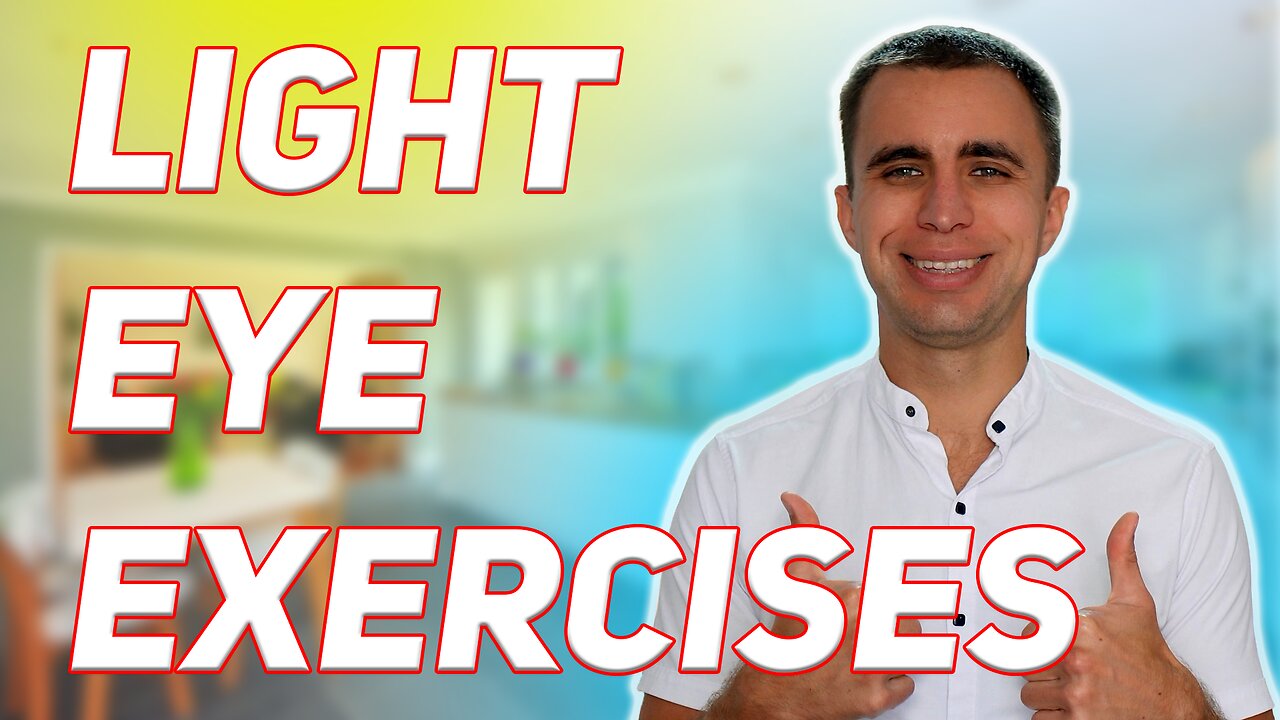Premium Only Content

Ideomotor Eye Exercises to Improve Vision for Serious Eyesight Problems
The concept of ideomotor movements, which are subconscious, involuntary motor responses, has fascinated scientists and health enthusiasts for centuries. Ideomotor eye exercises leverage this principle, aiming to enhance visual acuity and alleviate symptoms of various eyesight issues through subtle, reflexive eye movements. While these exercises are not a cure for serious eyesight conditions, they may complement medical treatments by strengthening eye muscles, improving coordination, and reducing eye strain.
Understanding Ideomotor Movements
Ideomotor movements are subtle, often subconscious responses of the body to thoughts or emotions without the individual intentionally moving. In the context of eye exercises, the ideomotor principle is applied to encourage natural, gentle eye movements that can help in conditioning and strengthening eye muscles, potentially leading to improved eye function.
Exercises for Serious Eyesight Problems
Focused Visualization
Objective: Enhances focus and mental control over eye movements.
How to Do It: Sit comfortably and close your eyes. Visualize a simple object or letter in your mind. Try to see it in as much detail as possible. Then, with your eyes still closed, visualize this object moving from left to right, up and down. This exercise stimulates the ideomotor response, encouraging eye movement without physical strain.
Guided Imagery for Eye Movement
Objective: Improves eye mobility and flexibility.
How to Do It: Close your eyes and imagine a clock face in front of you. Without moving your head, visualize your gaze moving to look at each number on the clock for a few seconds. Then, imagine watching a ball slowly bouncing from one number to another in a random sequence. This exercise promotes controlled eye movement in various directions.
Palming Visualization
Objective: Reduces eye strain and promotes relaxation.
How to Do It: Rub your palms together until they feel warm. Close your eyes and cover them lightly with your palms without pressing on your eyelids. Visualize a scene of deep relaxation, such as a dark, quiet space or a peaceful landscape. While visualizing, allow your eyes to move naturally under your palms. This exercise helps in relaxing the eye muscles and mind.
Blink Reflex Enhancement
Objective: Encourages healthy blink rate and eye moisture.
How to Do It: Close your eyes gently and visualize a scenario that typically triggers a blink reflex, like an object moving towards your eyes quickly or a sudden burst of light. The idea is to stimulate a natural blink response through visualization, without actually exposing your eyes to such conditions. This can help maintain a healthy blink rate and improve eye moisture.
Benefits and Precautions
Ideomotor eye exercises offer a gentle, non-invasive way to potentially support eye health, especially when combined with traditional eye care practices. They can be particularly soothing for individuals with eye strain or those recovering from eye surgery. However, it's crucial to remember that these exercises are not a substitute for professional medical treatment. Individuals with serious eyesight problems should consult with an eye care professional before starting any new exercise regimen.
Conclusion
Ideomotor eye exercises represent an innovative approach to eye health, focusing on the subtle power of the mind-body connection. By engaging in these exercises, individuals may experience reduced eye strain and improved eye muscle coordination. Always approach these exercises as a complementary practice to conventional eye care treatments and consult with a healthcare provider to ensure they are suitable for your specific eyesight needs.
-
 12:19
12:19
T-SPLY
16 hours agoDemocrats Start Economic War With El Salvador!
38.8K35 -
 3:14:44
3:14:44
TimcastIRL
10 hours agoDemocrat RAIDED After He's CAUGHT Harboring TERRORIST TdA Member, Wife ARRESTED
214K183 -
 2:42:29
2:42:29
RiftTV/Slightly Offensive
11 hours ago $24.69 earnedBabylon Bee Mocks Christianity in Con Inc War on "Christ is King" | Guest: Pastor Joel Webbon
80.6K79 -
 2:17:31
2:17:31
Laura Loomer
9 hours agoEP117: GOP Lets Radical Muslims Take Over Texas
41.3K73 -
 7:43:34
7:43:34
SpartakusLIVE
12 hours agoDuos w/ GloryJean on VERDANSK || #1 Most EATING Streamer
79.8K2 -
 7:25:28
7:25:28
Spartan (Pro Halo esports Player)
14 hours agoSdcrims no comms, then College match
71K1 -
 34:43
34:43
Stephen Gardner
11 hours ago🚨Trump Lawyer makes TWO HUGE ANNOUNCEMENTS | Benny Johnson
106K70 -
 2:17:31
2:17:31
Robert Gouveia
12 hours agoJudge BLOCKS Proof-of-Citizenship! Trump BACK to Supreme Court! Deportee Discovery STAYED!
95.7K36 -
 7:04:37
7:04:37
MyronGainesX
1 day ago $27.90 earnedCollege Debate Reaction, Jordan Peterson Sells Out, Shannon Sharpe Shakedown!
137K46 -
 2:01:49
2:01:49
Joker Effect
9 hours agoWE ARE IN THE WILDWEST! Frontier Legends is crazy!
40.7K